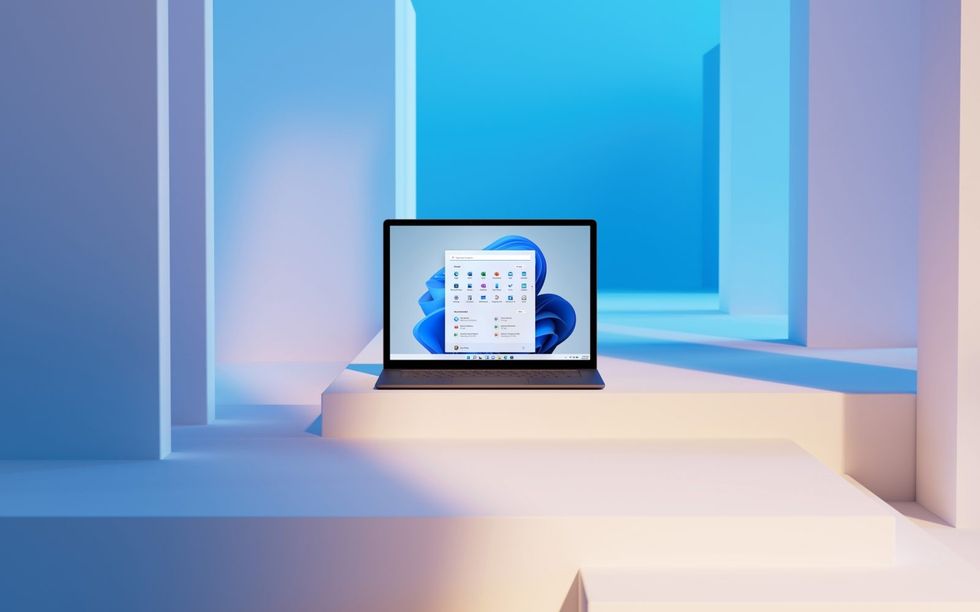



With , the US company will only support a single version of its immensely popular operating system. But what comes after Windows 11?
Released in October 2021, Windows 11 will likely be around until the early 2030s, but teams inside Microsoft are already hard at work on its successor. And now, we've had an early glimpse at what Microsoft has planned.
The Redmond-based technology giant outlining its "Windows 2030 Vision", presenting a future where artificial intelligence fundamentally transforms how you'll interact with your computer. Vice President for OS Security, David Weston, appears in the video to outline a dramatically different experience with Windows.
Instead of typing on a keyboard and clicking a mouse, the Microsoft executive believes PCs will work in an entirely new manner by the end of this decade. Weston says you'll communicate with your computer via natural conversation and visual cues, with next-generation Artificial Intelligence (AI) handling all of the grunt work and tasks independently.
Weston states: "I think we will do less with our eyes and more talking to our computers. And I truly believe that a future version of Windows, and other Microsoft operating systems, will interact in a multi-modal way."
He predicts the familiar mouse and keyboard interface will become obsolete.
"The world of mousing around and typing will feel as alien as it does to Gen-Z to use MS-DOS," Weston predicts, suggesting your future Windows experience will rely primarily on voice commands and visual interactions.
He added: "The computer will be able to see what we see, hear what we hear, and we can talk to it and ask it to do much more sophisticated things. I think it will be a much more natural form of communication."
How would this work in practice? Picture sitting at your desk in 2030 with Windows 12 – or whatever Microsoft decides to call it — running on your desktop PC or laptop and you need to prepare a presentation for tomorrow's meeting.
Rather than clicking around to launch a series of applications that might be useful to create the presentation, and clicking through menus to open new documents, import pictures, copy-paste text from various sources... you'll describe the sort of thing you're looking to create to Windows.
The system will be able to watch as you sketch rough ideas on paper and combine those with your verbal instructions. Like we've seen from , your Windows PC will gather relevant data, creates slides, and even suggests improvements based on what it observes and hears.
Slideshows, no stress. ChatGPT agent is your one-stop shop for fully editable presentations. pic.twitter.com/N4ut6HOOK4
— OpenAI (@OpenAI) July 17, 2025
Sure, you might have to make a few tweaks here and there, but the computer will generate something from scratch so you're not staring at a blinking cursor on a blank page, or trying to remember whether the setting you need is housed under theor thesubmenu in PowerPoint.
This is the multimodal future that Microsoft wants to build — where your computer becomes an intelligent collaborator that perceives your surroundings, listens to you, and responds to natural communication, eliminating the need for traditional manual input methods you've relied upon for decades.
 Windows 11 superseded Windows 10 back in October 2021, but it was only a few weeks ago that it managed to overtake its predecessor in terms of overall marketshare amongst Microsoft-powered devices | MICROSOFT PRESS OFFICE
Windows 11 superseded Windows 10 back in October 2021, but it was only a few weeks ago that it managed to overtake its predecessor in terms of overall marketshare amongst Microsoft-powered devices | MICROSOFT PRESS OFFICE
Based on its ambitious Windows 2030 Vision video, Microsoft envisions this technology operating at the core operating system level, not an overlay in some applications. This all-seeing, all-hearing AI would launch apps, generate new files, perform research, import text and photos, and execute a myriad of other tasks based on your spoken instructions — fundamentally altering how Windows functions. And saving you a lot of typing and clicking.
Despite these futuristic ambitions, Microsoft's immediate focus remains firmly on Windows 11 and . The company has shown no indication that Windows 12 will release anytime soon, instead concentrating on integrating AI features into the current operating system. With Windows 10's support ending on 14 October 2025, Microsoft is pushing users towards Windows 11 rather than a new version.
The company claims its Copilot+ PCs offer performance improvements of up to 50% compared to Apple's M3-powered MacBook Air, while introducing AI capabilities direclty into the taskbar. This strategy suggests you'll experience Microsoft's AI transformation gradually through regular updates rather than waiting an entirely new operating system.
It's worth noting that Microsoft's ambitious AI timeline faces scrutiny when compared to previous unfulfilled promises. The company initially claimed Copilot would transform Windows 11 settings management through simple prompts like "make me more productive", yet this functionality remains undelivered and apparently shelved.
Security innovations also feature prominently in the 2030 vision, with Weston describing "appliance-level security" — comprehensive device protection activated with a single click. He envisions AI security teams functioning like human engineers, managing threats in real-time.
Whether you'll actually experience these radical changes by 2030 remains questionable. Microsoft's track record suggests the reality might differ significantly from these lofty ambitions, potentially pushing such transformative features well beyond the proposed timeline.
